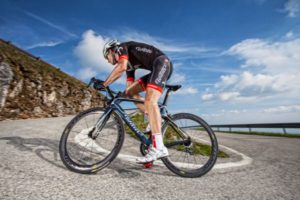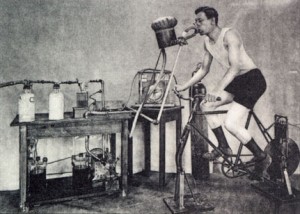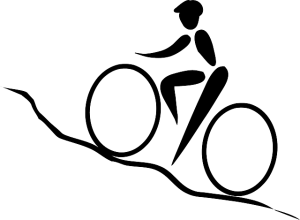Functional threshold power (FTP) is the maximum power that you are able to sustain over a one hour period, or at least, that is what it represents. It has since become more of a benchmark, as FTP can now be measured using a much shorter test. So, what is the best FTP test, and how can you use the results to structure your training plan?

Why does FTP matter?
Training with FTP isn’t for everyone, but by understanding which power zones you are training in you can become a lot more efficient and learn to listen to your body. If you want to try racing, or even tackle some time trials, knowing your FTP will help you pace your efforts and avoid burnout.
What you’ll need
Functional threshold power is measured in watts, so you will need a power meter. They can be expensive, so you can try a virtual power meter such as TrainerRoad or Zwift first. It will provide virtual numbers using the power curve on you indoor turbo trainer to calculate your watts. This can be a great option to see if crunching the numbers is for you before investing a lot of time and money into it.
Best FTP Tests
There are 2 ways to determine your functional threshold power. Both should be done when you are properly rested and performed on a slight and continuous uphill. Ensure there are no traffic lights or stop signs that may interrupt your test. Also ensure that you get a proper warm up in before either test.
The 1 Hour FTP Test
The most obvious way to determine functional threshold power is to do a one hour ride as steady and as fast as you possibly can. From there you would take your average power reading and that would be your FTP. However, it can be tough to push yourself for the length of an hour to get an accurate reading of just how fast you can go. When you’re not in a race environment, keeping your mind as focused as it needs to be will be a huge challenge.
You probably will not be as rested as you should be, you will not be racing anyone, and no one will be judging you if you go slow or congratulating you if you go quickly. If you choose to ride for an hour and it is not during a race you should take the average power output and add 5% – 8%. So if your average watts were 250 then your functional threshold power would be between 262.5 and 270 watts.
The 20 minute FTP Test
 The easier and more practical test can be done in 20 minutes. It may not be a “true” FTP test, as what you can maintain over 20 minutes will be different from what you could over an hour of pain, but it as much a mental test as it is physical.
The easier and more practical test can be done in 20 minutes. It may not be a “true” FTP test, as what you can maintain over 20 minutes will be different from what you could over an hour of pain, but it as much a mental test as it is physical.
For the first 5 minutes you may wonder what all the fuss about, but believe me, the pain will come. Again your goal here is to maintain the highest average wattage possible. It is easier to start out too fast in a 20 minute test, so ensure you get up to speed quickly, but do not push it too hard as you will tire too quickly and it would result in an inaccurate result. Once you have completed the 20 minutes reduce the average wattage by 5% – 8%. So if your average watts were 250, then your functional threshold power would be between 230 and 237.5 watts.
The 8 Minute FTP Test
You will complete this test twice, so it’s actually more like 16 minutes. The benefit: you have two efforts so you can learn from the first. This test is geared more towards experienced riders as it provides more information by demonstrating power at VO2max (the body’s ability to consume oxygen during intense exercise, in other words respiratory endurance).
Okay, get ready for the longest 8 minutes of your life. You will take your average power for the two 8-minutes intervals (pushing yourself to your limitand taking a break in between) and multiply by .90 to get your FTP. So, your FTP will be 90% of your average power over the two intervals.
Now what?
Once you have your FTP, what do you do with it? This is not a static number, but your FTP is a snapshot of your fitness level at any given time, so it can be used to measure your progress as well as a training tool. If you want to improve your FTP, your training should include workouts that combine riding just below your FTP at 90-98% with VO2max intervals, which are above your FTP from 105 – 120%. This will ensure you are pushing yourself in a way that can be missed by just using heart rate as a training measure, and will make you a stronger rider over time.

 In their quest to improve both stamina and speed, most cyclists will try out a number of training regimes before they find the one that gets the results that they want from the workout.
In their quest to improve both stamina and speed, most cyclists will try out a number of training regimes before they find the one that gets the results that they want from the workout.
 A number of athletes turn to interval training in order to improve their performance. Interval training involves periods of high-intensity riding that alternate with low-intensity rest periods. The purpose of interval workouts is to improve a cyclist’s speed/
A number of athletes turn to interval training in order to improve their performance. Interval training involves periods of high-intensity riding that alternate with low-intensity rest periods. The purpose of interval workouts is to improve a cyclist’s speed/